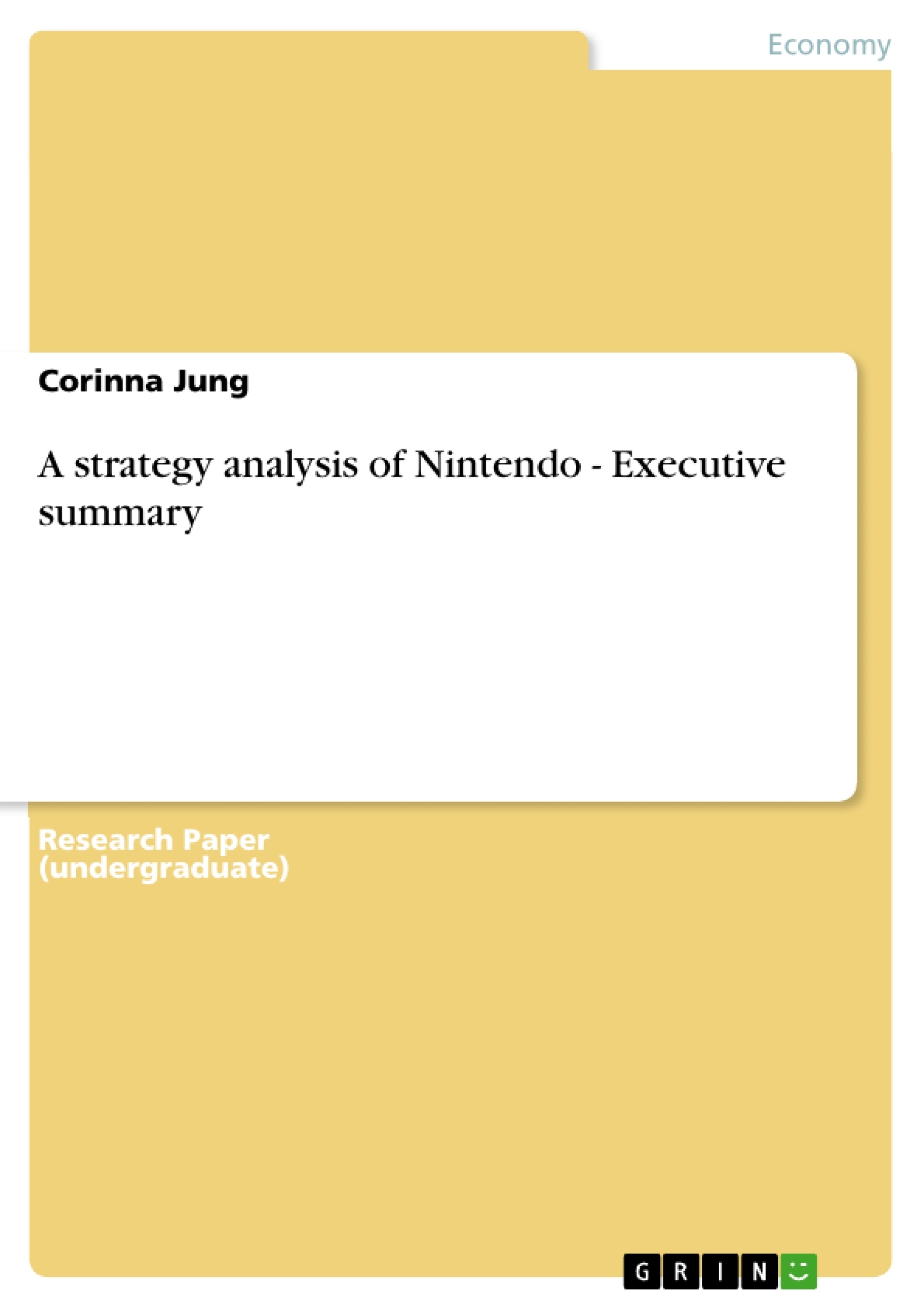1. Introduction
Nintendo, the Japanese video game console manufacturing company, is one of the big players in the respective industry along with Sony and Microsoft. In 2006, when the competitors were following the industry norm to improve the product features, Nintendo followed a disruptive route to target a new market with a new product that none of the competitors had: the Wii.
The following report strives to present a comprehensive strategic analysis of Nintendo for the executive board. Beginning with an analysis of Nintendo’s current strategy, the report evaluates the strategy in terms of its fit with the environment. Finally, the report presents some recommendations and implementation issues that the board needs to consider while making its decision.
2. Strategy Analysis
The strategic analysis of Nintendo has been conducted at the corporate level along with the Blue Ocean Strategy that played a key role in the formulation of its disruptive strategy.
2.1 Corporate Level Strategy
At the corporate level, Nintendo is following an Innovation Strategy that has played an important role in building its competitive advantage. Figure 1 shows an analysis of Nintendo’s innovation strategy through the framework of the Innovation Dilemma (Johnson et al., 2008). The analysis of Nintendo’s innovation strategy indicates that it used an innovative business model i.e. to position itself completely different from its competitors andquestioned how people actually want to play through its in depth customer understanding (Pontiskoski and Asakawa, 2009). Secondly, Nintendo used a technological push i.e. to target an untapped or incomplete market of gamers, as it had to convince the non-gamer adult to play on a Nintendo platform. Through its largest advertising campaign in its history, with costs over $200 million (Sliwinski, 2006), the company offered family-friendly and easy-to-use motion sensor technology.Thirdly, product innovation i.e. introduction of the Wii-mote and an infrared pointer was regarded as innovative product design (Farhoomand, 2009).
List of contents
1. Introduction
2. Strategy Analysis
2.1 Corporate Level Strategy
2.2 Ansoff’s Matrix
2.3 Blue Ocean Strategy
3. Evaluation of current strategies
3.1 Suitability
3.2 Acceptability
3.3 Feasibility
4. Evaluation of a Blue Ocean Strategy - A Purple Ocean?
5. Recommendations
5.1 Innovating the Business Model and Related Implementation Issues
5.2 Target Segment
5.3 Product offering &Revenue Model
5.4 Value Chain
6. Conclusion
7. References
8. Figures
- Quote paper
- Corinna Jung (Author), 2011, A strategy analysis of Nintendo - Executive summary, Munich, GRIN Verlag, https://www.grin.com/document/183155
-

-

-

-
Upload your own papers! Earn money and win an iPhone X. -

-
Upload your own papers! Earn money and win an iPhone X. -

-
Upload your own papers! Earn money and win an iPhone X. -

-
Upload your own papers! Earn money and win an iPhone X. -

-
Upload your own papers! Earn money and win an iPhone X. -

-
Upload your own papers! Earn money and win an iPhone X. -

-
Upload your own papers! Earn money and win an iPhone X.

